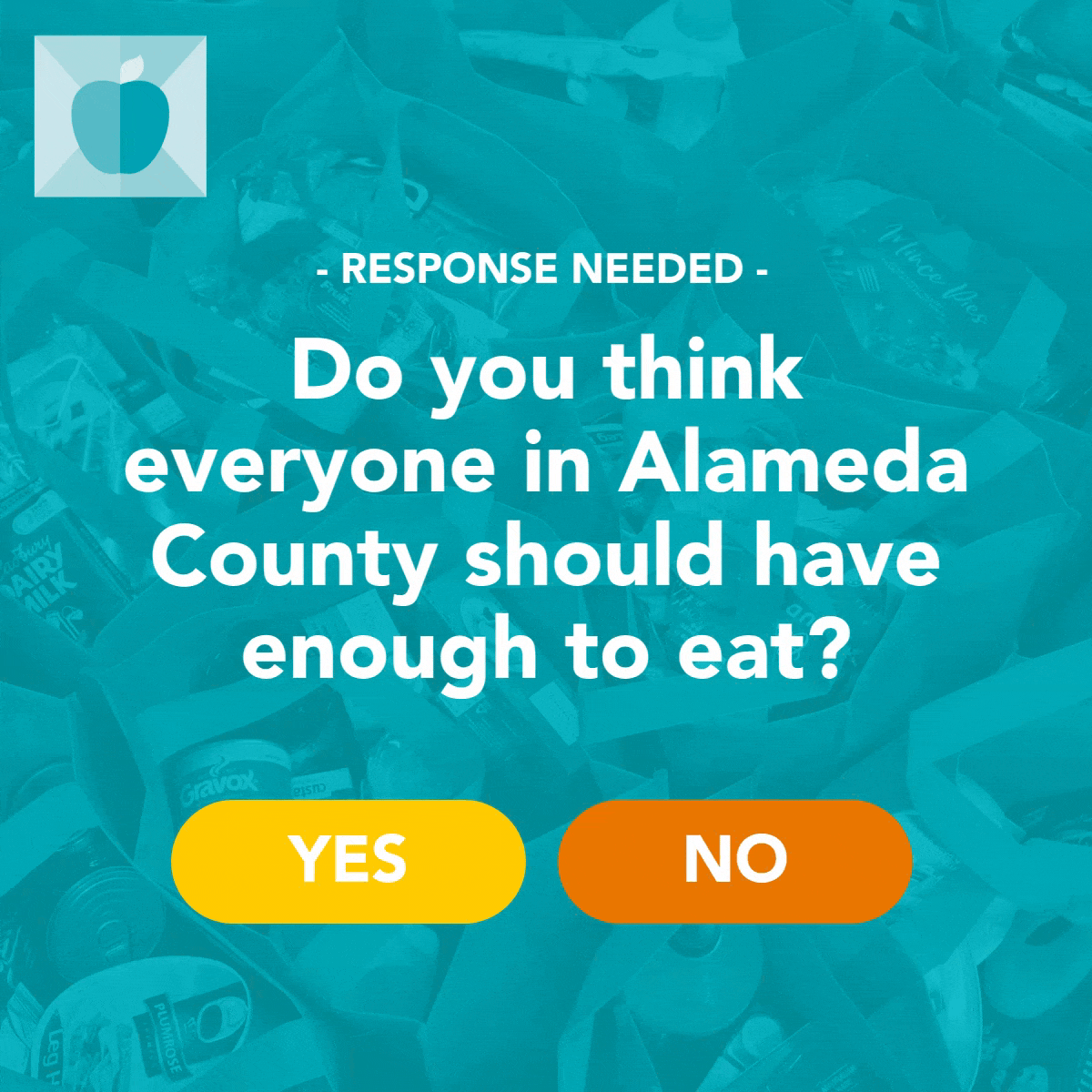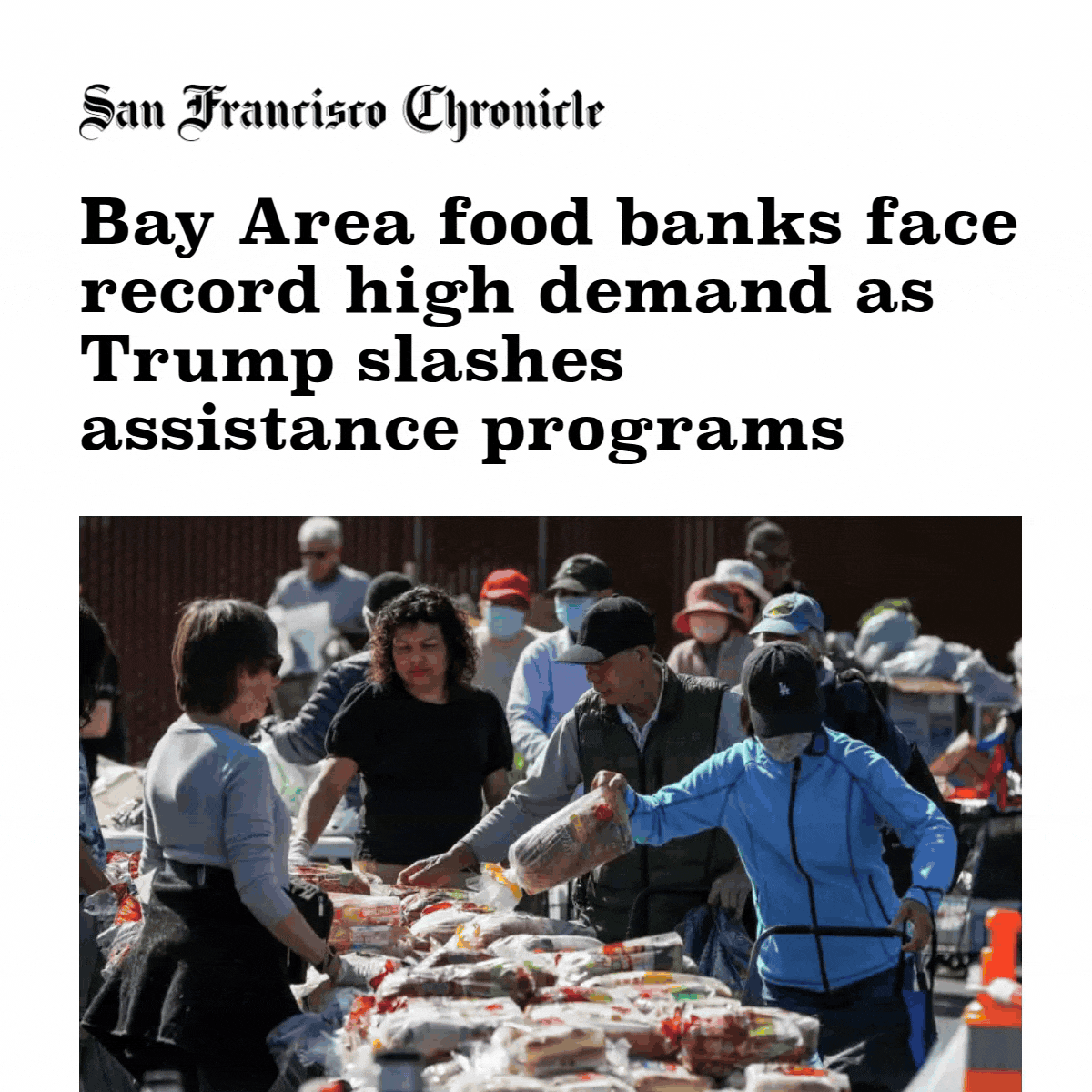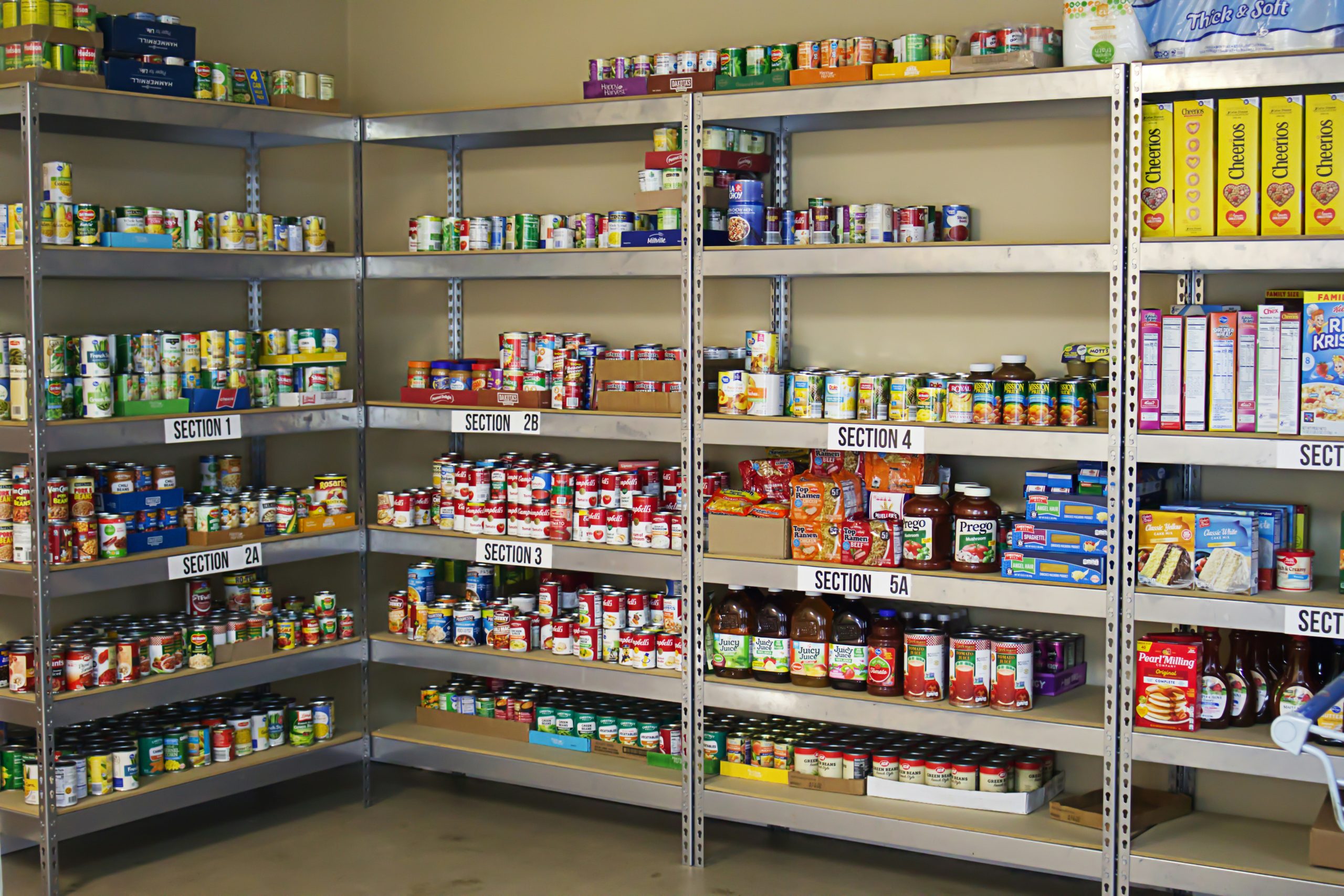There’s no denying it: food banks need more support than ever.
Food banks were already seeing record numbers of people needing help with food, and now, with the Reconciliation Bill 🤮 signed into law, we know even more people will be turning to their local food bank as critical anti-hunger programs are slashed.
In M+R’s Food Bank Edition of Benchmarks (thanks to our record 32 participating food banks!), Food banks saw basically even digital revenue year over year (0% change in online revenue 2023 to 2024 according to the study). But when we take into account the higher costs and higher demand food banks are facing — even revenue year over year likely feels like a decrease.
Local food banks are incredibly effective at what they do — distributing billions of meals across the country, connecting neighbors to vital programs, and working to address the root causes of hunger. But thanks to the Trump administration, this work is getting even harder.
This Hunger Action Month, we’re showing our love for food banks 🧡, and we’re gearing up for action! Here are five ways that every food bank (and others) can get this message out there, grow their programs to meet the growing need, and support our communities through this crisis.
Focus on acquisition
While food banks beat the industry benchmark mark for donor retention (51% median overall retention rate), the share of online revenue that food banks bring in from new donors is among the lowest for any cohort in the study, at just 13%.
Reaching new audiences is going to be key for any digital program looking to scale. And big moments when hunger issues are in the news can be some of the best times to find and activate new donors who can power your work during the immediate crisis and into the future.
There are a variety of ways to bring new supporters on to your file — and it’s worth investing in paid lead generation to build your supporter lists to meet these key moments.
Test lead generation channels like petition sites and list buys to reach audiences that are already, or likely to become, engaged with your issues.

On Meta, running ads with a simple question or advocacy action can successfully capture new leads.

Note – before you invest in acquisition, make sure you have a strong onboarding process in place. This means a welcome series and semi-regular engagement messages that share impact, build loyalty, and provide opportunities for conversion.
Of course, you can also generate new leads as new donors through prospecting and retargeting strategies with fundraising ads. Which brings me to the next recommendation…
Scale up digital advertising
Food banks, on average, are investing less in digital advertising — we look at the investment in digital advertising divided by total online revenue — the median for food banks is 6% compared to 14% for the industry overall.
While we’d generally recommend that food banks have some “always on” advertising to reach new and existing supporters throughout the year, advertising is a place where it’s especially important to be nimble. Having the funds and infrastructure to deploy at key moments with content that’s timely and drives home urgency can be key.

The opportunity on digital advertising is pretty endless — but it can be challenging to break through. Read more on the industry trends and opportunities we saw in this year’s Benchmarks here — my colleague Sarah had a lot of feelings.
Don’t wait: find fundraising moments outside end of year
While November and December are the biggest fundraising months for organizations and sectors across the study, food bank revenue is even more heavily weighted towards that time period. In 2024, the median food banks had 55% of digital revenue come in across the last two months of the calendar year.
Being so dependent on one time period is risky! Food banks’ critical work is important all year long — so why not give your supporters more opportunities to get involved!?
Consider your own Giving Day (it might just be your secret weapon, according to my colleague Emily), and we’ve seen several food banks find success with this tactic!
Second Harvest Heartland in Minnesota runs their 24-Hour Harvest campaign in April, with promotions running across channels (this is key), they’ve built the day over the years. Now it’s a known event for the community and a big revenue driver outside of end of year!


Or (and?), does your food bank need new equipment? Most do! Try an equipment campaign to get your community involved and excited about providing something specific to the food bank. The Community Food Bank of New Jersey got folks so excited about their campaign to purchase a new refrigerated truck, they ended up on the local news and exceeded their fundraising goals!

As always, highlight Need, Impact, Urgency, Relevance, and Authenticity to develop ethical and effective creative. (Check out M+R’s guide on this for more!)
Ditch the fundraising/advocacy binary
Building on the above — there is a key opportunity coming up for food banks: September is Hunger Action Month and Hunger Action Day is September 9.
Over the past few years, we’ve seen food banks successfully build out campaigns around this that get supporters to take action in a variety of ways — from writing and calling their lawmakers, to volunteering, running a food drive, and yes, donating.
Food banks are naturally authentic and relevant voices on the need in the community — talk to your supporters about the impact policies (at the local and federal level) have and how they can help both through advocacy actions and providing critical support.
As you build out your plans for September, consider how to build in proven tactics — like matches and deadlines, combined with the real urgency and increased need created by lawmakers to really “own” Hunger Action Month and Day.
And then, keep it going all year long. Talk to your supporters about what’s most important — share the real impact that policy decisions have on your community and how everyone can be a part of the solution.


For Alameda County Community Food Bank, this message series — an action alert followed by a fundraising ask (and a liftnote) — was a top-performing approach in terms of engagement and donation conversions.
Try new channels
SMS
We are excited to see more food banks launching SMS programs — there was a lot of growth for food banks here in 2024! But still not many food banks are taking advantage of this tool.
Especially as we see some declines for food banks on email (Benchmarks shows a 32% decline in email response rates for food banks, and an 18% decline in email revenue), introducing a new channel can help you stay in touch with your donors. And SMS has the added bonus of working really well as a rapid response channel.

Want to see more? This year, we had 32 regional food banks participate in M+R’s annual Benchmarks Study. Sometimes when we have a particularly robust cohort of participants in one category, we’re able to pull out their data to do an even more specific version of the study. So, for the second year in a row, we’re excited to share the Food Bank Edition of Benchmarks publicly!
While we’re devastated by the outcomes of the Reconciliation Bill (and we’re resisting and fighting this administration’s continued assaults), we know that we can continue to educate and build a strong anti-hunger coalition. Food banks are more important than ever, and we’re proud to be in this work with you.



